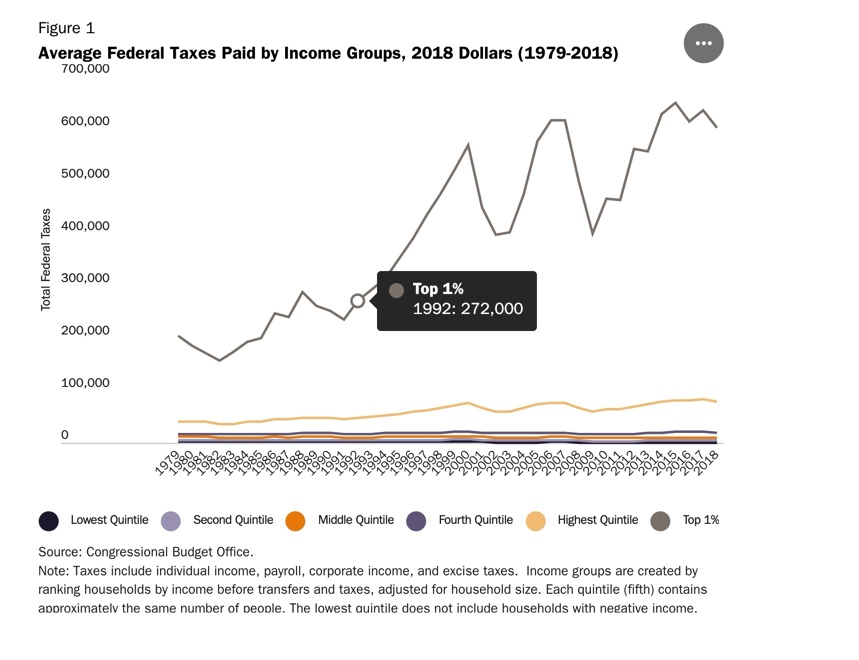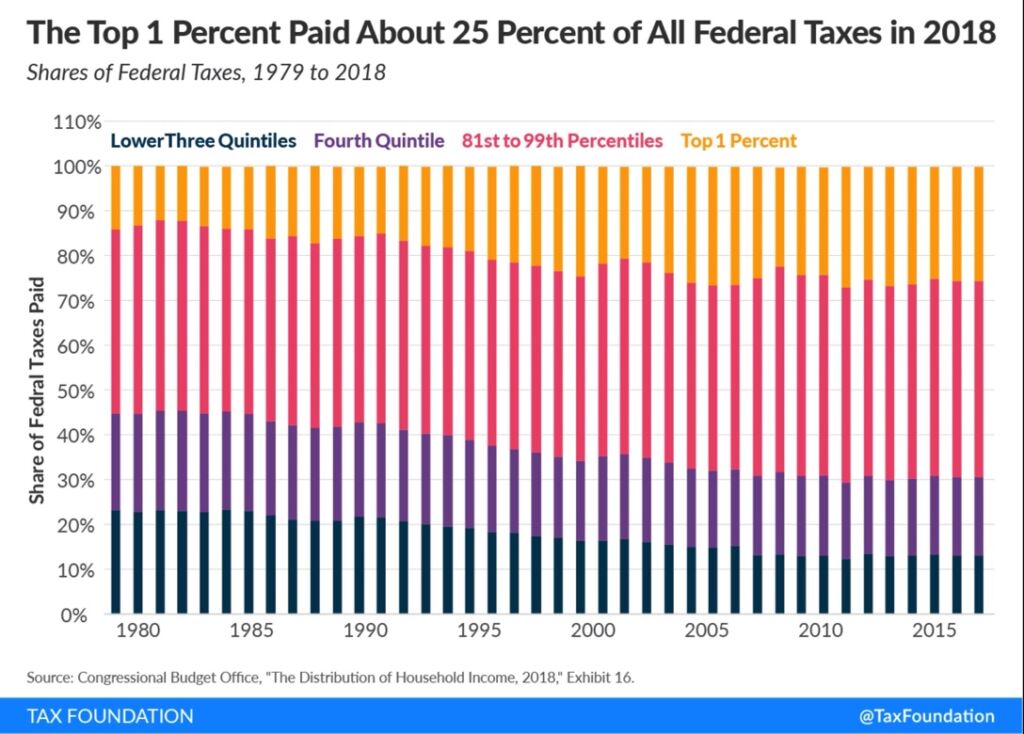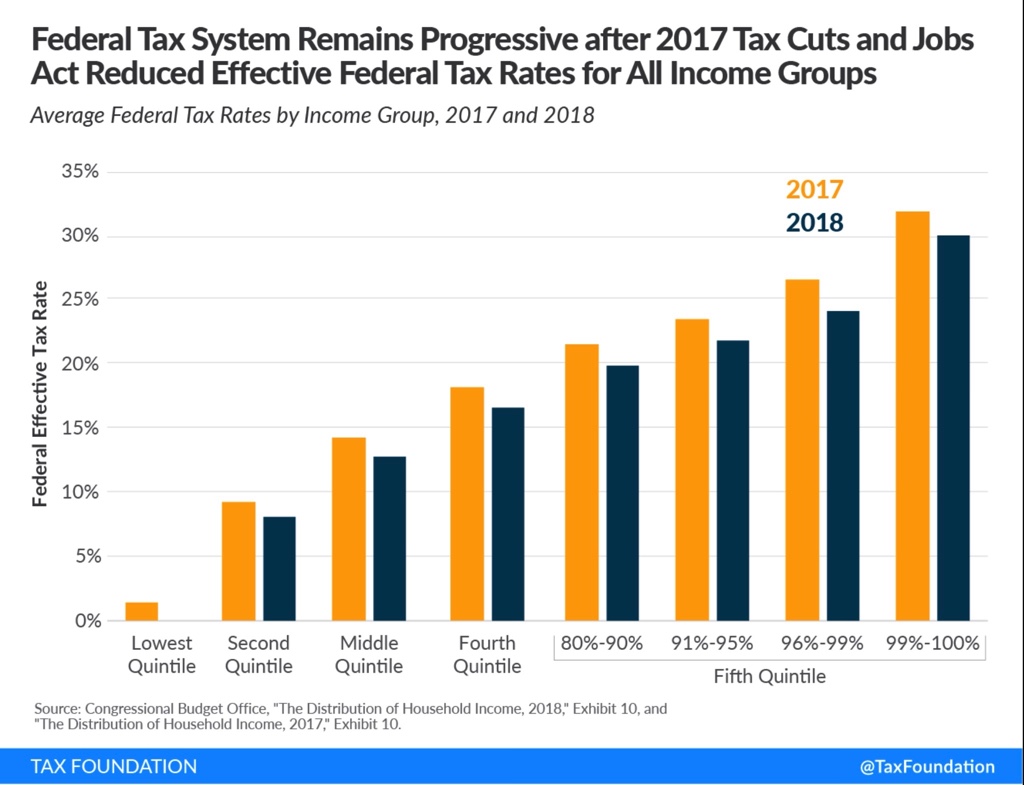Share of federal taxes paid by top 1 percent increased after Trump tax cuts
When the Tax Cuts and Jobs Act (TCJA) was introduced in 2017, one of the biggest criticisms about that bill was that it was a giveaway to the rich. Data from the Congressional Budget Office (CBO), however, show that this claim is largely unfounded.
Despite the tax cuts, the federal income tax code remains progressive, with the richest individuals still paying the most into the system. Additionally, data shows that the TCJA reduced tax rates for everyone across the board, with tax rates for the bottom 20 percent filers falling effectively to zero.
According to Cato,
For starters, the CBO data again show that the rich in the United States are paying a lot of taxes – even in 2018 after the Tax Cuts and Jobs Act took effect. In particular, the total amounts of annual federal taxes paid by the top quintile and the top 1 percent have basically doubled and tripled, respectively, since 1979 (adjusting for inflation). By contrast, the tax burdens of middle-income Americans (the second through fourth quintiles) have largely remained steady, and the federal taxes on the poorest Americans (the lowest quintile) have basically disappeared:

Indeed, between 2017 to 2018, the share of federal taxes paid by the top one percent increased from 25.5 percent to 25.9 percent, despite the claims that the tax cut was a gift to the rich. According to the Tax Foundation, “that makes their share in 2018 the highest of federal taxes paid by an income group since 2008 and the third-highest since 1979.” On the other hand, the share of taxes paid by the bottom 20 percent of households declined from 13 percent to 12.5 percent.

Overall,
The TCJA reduced the average federal tax rate from 20.8 percent to 19.3 percent for all filers. The bottom 20 percent of earners saw their average federal tax rate fall from 1.2 percent to nearly 0 percent. The top 1 percent of filers saw a 1.5 percentage point decline, from 31.7 percent in 2017 to 30.2 percent in 2018.

The fact is that high-income individuals pay a disproportionate share of federal income taxes, despite claims about them not paying their fair share. And that hasn’t changed even with the 2017 Trump Tax cuts.